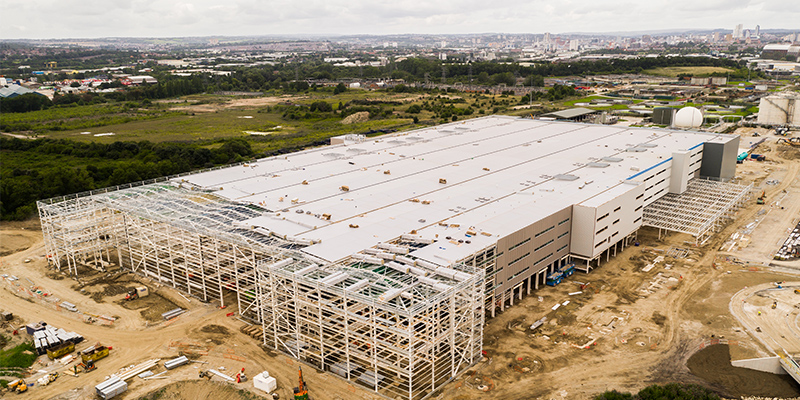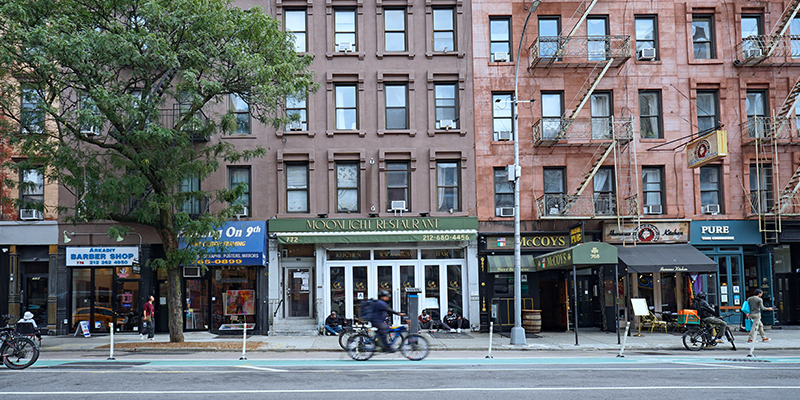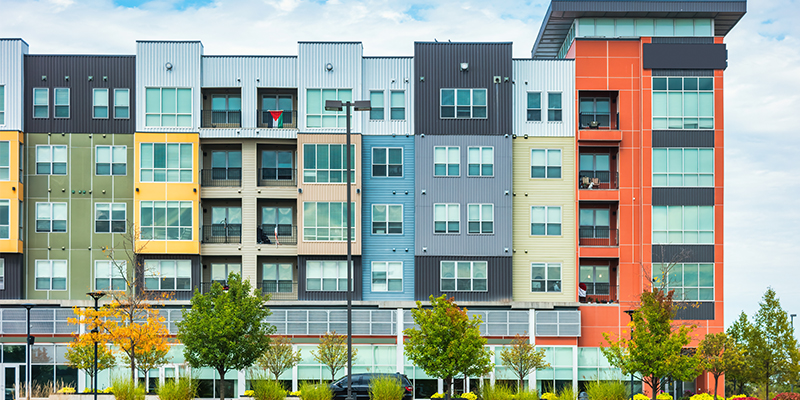Supply chain, logistics and transportation play a major role in site selection for industrial real estate, which has been disrupted along with many other economic sectors by the COVID-19 pandemic but remains in a strong position overall, said Adam Roth, CCI, SIOR, executive vice president of NAI Hiffman, at CRE:Converge 2022.
Corporations make site selection decisions by balancing the costs of industrial real estate with the percentage of suppliers and consumers they want to be able to reach same day and next day. They make algorithmic calculations that result in hub-and-spoke supply chain maps outward from central nodes where warehouses are located, Roth said.
“What is, by far, the biggest determining factor that goes into where [companies] locate real estate? Transportation. It’s not even close,” he said, noting that transportation typically costs companies 10 times what real estate costs, and that’s closer to 12 to 15 times right now. “If you can solve for transportation, the real estate [cost] almost doesn’t matter.”
Roth referred to what he calls “the rule of 1.5,” meaning that whatever is happening in transportation right now will impact industrial real estate about a year and a half later. “It’s a crystal ball of where we’re going to be,” he said. “We lag, and it takes the industry time to react.”
Among the most significant developments in the transportation sector during the past five years, according to Roth, have been the move to precision scheduled railroads, which has made rail companies significantly more profitable as they reduce the number of nodes they serve; a 2017 government mandate that prohibits trucking companies from keeping paper log books in their tractor-trailers, which helps ensure their compliance with federal work rules; a January 2020 federal regulation that has led to far more truck drivers having their licenses suspended for drug and alcohol abuse; and spikes in trucking insurance costs of as much as 300%.
“If your transportation spend is going up that much more, how are you going to make it up?” he said. “The best way to make it up is real estate. Get closer. Reduce your length of haul … You will be seeing more and more people saying that they have to reduce exposure to long-haul trucking.”
Current factors impacting the nexus between transportation and industrial real estate have been the move from the historical focus on “just-in-time” delivery of goods to the more cautious “just-in-case” approach of stockpiling more goods; what Roth calls “co-optition” among retailers to fight the “big three” of Amazon, Walmart and Target; the ever-important “last-mile” factor; and the desire to source supply chain somewhere other than China.
Roth calls that “China plus one,” adding that, “the supply chain is going to change. I’m not saying everything is going to be made in North America. But they are trying to reduce their exposure.” He added that Mexico has been the first beneficiary of this, although Taiwan, India and other countries will see their share of increased business.
Going into the future, this will mean a certain amount of “re-shoring” and what Roth terms “supply web, rather than supply chain. Don’t be linear.” Roth and his colleagues at NAI Hiffman undertook an exercise in which they attempted to create an outbound transportation model for a fictional company to see how many real estate locations they would need to meet a percentage of demand within a certain distance, playing with the various parameters.
While meeting 100% of demand within 300 miles of a warehouse proved virtually impossible, they tweaked the algorithm to meet 90% of demand and found that required just 10 U.S. facilities, albeit not necessarily in most intuitive locations. For example, Des Moines, Iowa, was on the list, but not Chicago, Roth said. To meet 90% of demand within 150 miles of a warehouse required a considerably higher 33 facilities. “Every single market has a different story to it,” he said. “You’re not going to build 1 million square feet in Des Moines.”
Looking out further, Roth said he expects autonomous trucking to be probably the second-biggest disruptor to industrial real estate, although it won’t be a significant factor for seven to 10 years, he said. The biggest disruptor? 3D printing. “Because you can print on demand. You don’t need inventory. You don’t need shipping,” he added. “It’s just not there yet. But that’s what scares me. That will drastically change shipping patterns. Your transportation will be inverted.”
For the time being, Roth expressed optimism about industrial real estate, especially given the move toward re-shoring of the supply chain in the U.S. Shifts in the global supply chain will also be driven by factors like the International Maritime Organization’s enforcement of regulations on particulate matter in shipping containers, overall climate implications of worldwide shipping, and geopolitical considerations like the Russia-Ukraine war.
“Deglobalization is real, and it’s happening,” he said. “With climate change, you’re going to see migration in the population. Where’s fresh water? Where’s the smallest possibility of natural disasters?” Those factors “are going to make you want to get close and bring manufacturing components, where you can, back to North America. All of this is great for industrial real estate. I’m all in. The story is evolving, but industrial real estate is positioned extremely well.”

This post is brought to you by JLL, the social media and conference blog sponsor of NAIOP’s CRE.Converge 2022. Learn more about JLL at www.us.jll.com or www.jll.ca.








